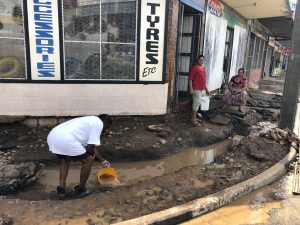
By Lisa Rapaport
(Reuters Health) – More than a fifth U.S. school districts lack comprehensive plans to respond to natural disasters, epidemic diseases or other emergencies, a new report finds.
While almost 80 percent of school districts nationwide have plans to help students and staff with special needs during an emergency situation, only about 68 percent have protocols to reunite children with their families after disaster strikes, according to the report from the U.S. Centers for Disease Control and Prevention (CDC).
Roughly 69 percent of school districts have procedures set up to cope with pandemic influenza or other infectious disease outbreaks and to offer mental health support to students, faculty and staff after a crisis, the report also found.
“Schools have direct contact with approximately 95 percent of America’s children between 5 and 17 years of age, for about six hours a day, and are active partners in infectious disease prevention and control and in the unfolding of any emergency event such as floods or hurricanes,” said lead report author Brenda Silverman of the CDC.
“Because children are separated from their caregivers while attending school, school preparedness plans need to reflect children’s unique needs with an emphasis on family reunification,” Silverman added by email.
To assess emergency preparedness, CDC researchers examined 2012 survey data on health policies and practices at about 700 school districts nationwide.
Respondents were asked whether the school district required schools to have a comprehensive plan in place to address four specific topics: family reunification, infectious disease outbreaks, provisions for people with special needs and mental health care after a crisis.
On all fronts, urban school districts were more likely to require plans than their rural counterparts.
Overall, districts in the Midwest were less likely to require schools to include specific topics in their crisis preparedness plans than districts in the Northeast and South.
Districts were less likely to coordinate emergency plans with families than with local law enforcement and emergency service providers, the report found.
About 43 percent of districts nationwide collaborated with families to develop preparedness, response and recovery plans.
Almost 95 percent of districts partnered with law enforcement, however, and 92 percent coordinated with fire officials.
While about 83 percent of districts coordinated with local emergency medical service providers, just 41 percent collaborated with a local hospital and 66 percent partnered with the local health department.
One limitation of the report is that the survey included “yes or no” responses that didn’t leave room for districts to explain the relevance of certain topics in their preparedness plans or identify areas for improvement, the authors note.
In addition, because the survey is only done every six years, it’s possible that the data from 2012 doesn’t reflect current practices or policies.
Still, the findings suggest that at least some school children may be vulnerable in an emergency, said Dr. Laura Faherty, a pediatrics researcher at RAND Corporation in Boston who wasn’t involved in the report.
“Schools are where kids spend the majority of their day, but they don’t exist in isolation,” Faherty said by email. “Coordination among health departments, healthcare settings, law enforcement, first responders, mental health and social services agencies, as well as families, is critical to making sure children are as safe as possible.”
The results of poor planning can be dire, said Dr. Daniel B. Fagbuyi, a researcher at George Washington University in Washington, D.C., who wasn’t involved in the report.
“When schools aren’t fully prepared for a disaster life altering consequences may occur including increased morbidity and mortality,” Fagbuyi said by email. “Conversely, disaster preparedness activities at the school and in collaboration with community and parents fosters confidence, community resilience and can save lives.”
SOURCE: http://bit.ly/2cmM426 Morbidity and Mortality Weekly Report, online September 16, 2016.


